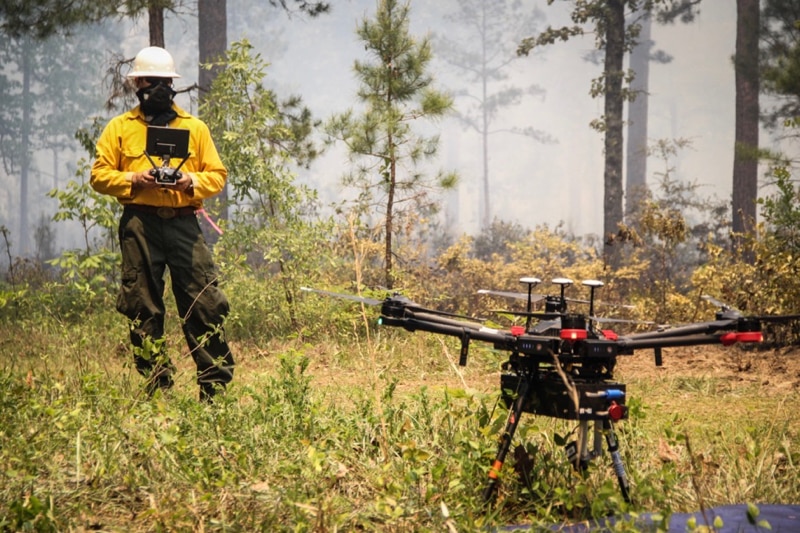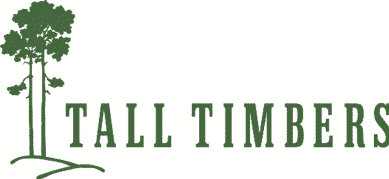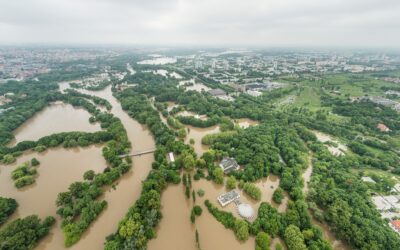A team of leading fire scientists, including DRI’s Adam Watts, PhD, are advocating for fire research to place a priority on the area of prescribed fire science. In a recently published article in Frontiers in Fire Ecology, Watts and colleagues argue that while the vast majority of fire research focuses on issues related to suppressing wildfires, more attention must be paid to prescribed fires, which behave differently and burn more land each year than wildfire. With a greater focus on “fire we use,” authors argue, fire scientists will be able to maximize the societal and ecological benefits of prescribed burning.
The press release below is reposted with permission from Tall Timbers Research Station in Tallahassee, Florida.
Fire researchers provide new agenda for a future with safer fire
April 17, 2020 − Leading fire researchers join together and advocate for new direction and funding to place a priority on prescribed fire science to address the global challenge of managing wildland fires. Prescribed fires are planned burns that protect communities by clearing out overgrowth that fuels out-of-control wildfires and restores and maintains plant and animal biodiversity. The March 2020 peer reviewed article is published in the journal “Fire Ecology” and has been added to the special “Frontiers in Fire Ecology” compilation of manuscripts that represents current advances and directions.
“You can’t just use wildfire research to address prescribed fire needs, the contexts are fundamentally different,” explains lead author Kevin Hiers from Tall Timbers Research Station. Prescribed fires are increasingly recognized as the solution to minimize impacts from wildfires and maintain ecosystem resilience, but there has been a lack of targeted science to support their expanded use. Most of the research has focused on needs and tools for wildfire suppression, despite the fact that prescribed fires cover more area each year, and there is a demonstrated need for science to guide its application and safely increase its use.
Grants from the US Joint Fire Science Program are awarded 3:1 in favor of wildfire- to prescribed-fire-focused research, while we use 4 to 4.5 million hectares of prescribed fire in the US, versus only 2 to 4 million hectares of wildfire occurring each year. Prescribed fire is one of the most effective techniques for enabling a future in which people can live sustainably with fire. The article explains, “A focus on the ‘fires we use’ has an immediate impact on the ability to safely and effectively achieve natural resource objectives for societal benefit and ecosystem resilience.”

Watts pilots the UAS, stationed on the ground near the burn area, during the Prescribed Fire Science Consortium’s 2018 research burn, hosted by the Tall Timbers Research Station and the U.S. Forest Service. Credit: David Goodwin/Southern Fire Exchange.
The researchers, from more than ten organizations spanning the US, also highlight the important role of the individuals who actually apply prescribed fire. Prescribed fire managers bear the responsibility of choosing to start a fire, a decision with weighty career and legal consequences. Given the societal and ecological benefits of their actions, we should be arming them with the best available science and technology. As a complicating factor, climate change is challenging decades of firsthand knowledge prescribed fire managers have used to safely apply beneficial burns. The article identifies the research gaps that provide a blueprint to help fire managers worldwide protect our communities and forests.
Technology is likely to play a big role in the future of prescribed fire. Just as flight simulators are required for airplane pilots, use of such tools for prescribed fire manager training could become a standard supplemental experience to better align fire behavior with prescribed fire planning, implementation, and outcomes.
Tall Timbers is a research station and land conservancy in Tallahassee, Florida, with a primary research focus on the ecology and management of fire-dependent ecosystems. Author information and affiliations for the paper follow. “Prescribed fire science: the case for a refined research agenda” appears in “Fire Ecology” volume 16, Article number: 11 (2020), it is open access and available at the following link https://fireecology.springeropen.com/articles/10.1186/s42408-020-0070-8.
- Tall Timbers Research Station, Tallahassee, Florida, 32312, USA.
Kevin Hiers, J. Morgan Varner, Kevin Robertson & Eric M. Rowell
- USDA Forest Service Center for Forest Disturbance Science, Athens, Georgia, 30602, USA
Joseph J. O’Brien, Scott L. Goodrick & E. Louise Loudermilk
- USDA Forest Service Rocky Mountain Research Station, Missoula, Montana, 59808, USA
Bret W. Butler & Sharon M. Hood
- USDA Forest Service Northern Research Station, Delaware, Ohio, 43015, USA
Matthew Dickinson
- USDA Forest Service Northeastern Area State and Private Forestry, Munson, Florida, 32570, USA
James Furman
- USDA Forest Service Northern Research Station, New Lisbon, New Jersey, 08064, USA
Michael Gallagher
- Southern Fire Exchange, University of Florida & Tall Timbers Research Station, Tallahassee, Florida, 32312, USA
David Godwin
- USDA Forest Service Rocky Mountain Research Station, Moscow, Idaho, 83844, USA
Andrew Hudak
- University of Idaho, Department of Natural Resources & Society, Moscow, Idaho, 83844, USA
Leda N. Kobziar
- Los Alamos National Lab, Los Alamos, New Mexico, 87545, USA
Rodman Linn
- USDA Forest Service Rocky Mountain Research Station, Fort Collins, Colorado, 80526, USA
Sarah McCaffrey
- USDA Forest Service Northern Research Station, Morgantown, West Virginia, 26505, USA
Nicholas Skowronski
- Desert Research Institute, Reno, Nevada, 89512, USA
Adam C. Watts
- USDA Forest Service Forest Products Lab, Madison, Wisconsin, 53726, USA
Kara M. Yedinak
###
Media Contact:
Contact: Brian Wiebler
Phone: 850-363-1079
Email: bwiebler@TallTimbers.org



